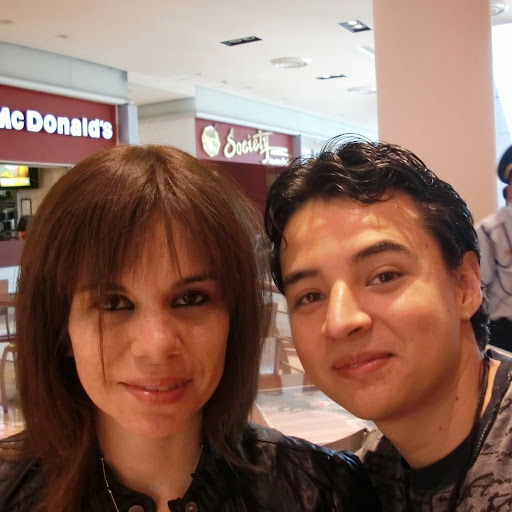Luis A Plata
age ~73
from Plano, TX
- Also known as:
-
- Luis Placa
- Plata Luus
Luis Plata Phones & Addresses
- Plano, TX
- Point, TX
- Richardson, TX
- 4606 Largo Trl, Garland, TX 75044 • 9724967905
- Sachse, TX
- Dallas, TX
Resumes

Mechanical Engineer - Team Leader
view sourceLocation:
111 Misty Glen Ln, Murphy, TX 75094
Industry:
Mechanical Or Industrial Engineering
Work:
University of Texas at Dallas Oct 2011 - May 2015
Research Assistant
Lintec of America, Inc. Oct 2011 - May 2015
Mechanical Engineer - Team Leader
Research Assistant
Lintec of America, Inc. Oct 2011 - May 2015
Mechanical Engineer - Team Leader
Education:
The University of Texas at Dallas 2008 - 2015
The University of Texas at Dallas 2008 - 2013
The University of Texas at Dallas 2008 - 2013
Skills:
Matlab
Product Development
Rapid Prototyping
Manufacturing
Research and Development
Data Analysis
Automation
Six Sigma
Sales
Programming
Green Belt
Kaizen
Research
Microsoft Office
Microsoft Excel
Microsoft Word
Microsoft Powerpoint
Arduino
Office 365
Labview
Computer Hardware
Customer Service
Teamwork
Leadership
Public Speaking
Team Building
Management
Spanish
Motion Control
Power Tools
Nanotechnology
Testing
Continuous Improvement
Engineering
5S
Mechanical Engineering
Chemical Vapor Deposition
Cross Functional Team Leadership
Solidworks
Mixed Signal
Product Development
Rapid Prototyping
Manufacturing
Research and Development
Data Analysis
Automation
Six Sigma
Sales
Programming
Green Belt
Kaizen
Research
Microsoft Office
Microsoft Excel
Microsoft Word
Microsoft Powerpoint
Arduino
Office 365
Labview
Computer Hardware
Customer Service
Teamwork
Leadership
Public Speaking
Team Building
Management
Spanish
Motion Control
Power Tools
Nanotechnology
Testing
Continuous Improvement
Engineering
5S
Mechanical Engineering
Chemical Vapor Deposition
Cross Functional Team Leadership
Solidworks
Mixed Signal
Languages:
English
Spanish
Spanish
Certifications:
Lean Six Sigma Green Belt

Luis Plata
view source
Luis Francisco Plata
view source
Luis Alfonso Jaimes Plata
view source
Luis Francisco Plata
view sourceUs Patents
-
Artificial Muscle Actuators
view source -
US Patent:20210262452, Aug 26, 2021
-
Filed:Apr 29, 2021
-
Appl. No.:17/244254
-
Inventors:- Richardson TX, US
Yang YANG - Richardson TX, US
Luis PLATA - Richardson TX, US
Marilu GUERRERO - Richardson TX, US
Franklin LE - Richardson TX, US
Randy ALLEN - Richardson TX, US -
Assignee:LINTEC OF AMERICA, INC. - Richardson TX
-
International Classification:F03G 7/06
F16K 31/44
H02N 11/00
H01H 85/04 -
Abstract:A hinge-type actuator device in accordance with the present disclosure may include a first and second paddle, a first and second artificial muscle actuator segment, and a plurality of contacts, where the first and second artificial muscle actuator segments are actuated via the contacts, actuation of the first artificial muscle actuator segment causes the first and second paddle to open the hinge-type actuator, and actuation of the second artificial muscle actuator segment causes the first and second paddle to dose the hinge-type actuator.
-
Artificial Muscle Actuators
view source -
US Patent:20210140414, May 13, 2021
-
Filed:Jan 21, 2021
-
Appl. No.:17/154391
-
Inventors:- Richardson TX, US
Yang YANG - Richardson TX, US
Luis PLATA - Richardson TX, US
Marilu GUERRERO - Richardson TX, US
Franklin LE - Richardson TX, US
Randy ALLEN - Richardson TX, US -
Assignee:LINTEC OF AMERICA, INC. - Richardson TX
-
International Classification:F03G 7/06
F16K 31/44
H02N 11/00
H01H 85/04 -
Abstract:An actuator device that includes a first fiber, a conducting material, and a coating. The coating coats the first fiber or the conducting material. The coating may also provide moisture protection, UV protection, thermal insulation and thermal conductivity.
-
Improvements In Artificial Muscle Actuators
view source -
US Patent:20200063720, Feb 27, 2020
-
Filed:Dec 7, 2017
-
Appl. No.:16/466131
-
Inventors:- Richardson TX, US
Yang Yang - Richardson TX, US
Luis Plata - Richardson TX, US
Marilu Guerrero - Richardson TX, US
Franklin Le - Richardson TX, US
Randy Allen - Richardson TX, US -
Assignee:Lintec of America, Inc. - Richardson TX
-
International Classification:F03G 7/06
-
Abstract:An actuator includes a plurality of artificial muscle fibers and at least one conducting material. The at least one conducting material electrically stimulates the plurality of artificial muscle fibers during activation of the actuator. An actuator device includes at least one artificial muscle fiber and at least one high-strength creep-resistant fiber.
-
Improvements In Artificial Muscle Actuators
view source -
US Patent:20200051769, Feb 13, 2020
-
Filed:Dec 7, 2017
-
Appl. No.:16/467830
-
Inventors:- Richardson TX, US
Yang Yang - Richardson TX, US
Luis Plata - Richardson TX, US
Marilu Guerrero - Richardson TX, US
Franklin Le - Richardson TX, US
Randy Allen - Richardson TX, US -
Assignee:Lintec of America, Inc. - Richardson TX
-
International Classification:H01H 85/04
-
Abstract:An actuator device that includes a conducting material and at least one fuse incorporated into the conducting material is disclosed. The at least one fuse may stop current flow for temperatures above a specific temperature. The actuator device may also include a series of electronics that determine whether the actuating device has blown the at least one fuse.
-
Improvements In Artificial Muscle Actuators
view source -
US Patent:20190277266, Sep 12, 2019
-
Filed:Dec 7, 2017
-
Appl. No.:16/466532
-
Inventors:- Richardson TX, US
Yang Yang - Richardson TX, US
Luis Plata - Richardson TX, US
Marilu Guerrero - Richardson TX, US
Franklin Le - Richardson TX, US
Randy Allen - Richardson TX, US -
Assignee:Lintec of America, Inc. - Richardson TX
-
International Classification:F03G 7/06
F16K 31/44
H02N 11/00 -
Abstract:A hinge-type actuator device in accordance with the present disclosure may include a first and second paddle, a first and second artificial muscle actuator segment, and a plurality of contacts, where the first and second artificial muscle actuator segments are actuated via the contacts, actuation of the first artificial muscle actuator segment causes the first and second paddle to open the hinge-type actuator, and actuation of the second artificial muscle actuator segment causes the first and second paddle to close the hinge-type actuator.
-
Bi-Stable Actuator Devices
view source -
US Patent:20190154122, May 23, 2019
-
Filed:Apr 28, 2017
-
Appl. No.:16/097555
-
Inventors:- Richardson TX, US
Luis Plata - Richardson TX, US
Yang Yang - Richardson TX, US -
Assignee:Lintec of America, Inc. - Richardson TX
-
International Classification:F16H 19/06
H02N 11/00 -
Abstract:An actuator device that includes a first actuating segment of an artificial muscle fiber, where one end of the first actuating segment is connected to a first terminal and the other end of the first actuating segment is connected to a second terminal. The device also includes a second actuating segment of an artificial muscle fiber, where one end of the second actuating segment is connected to a third terminal and the other end of the second actuating segment is connected to a fourth terminal. The device also includes a paddle disposed on both the first and second actuating segments and a heating provision disposed on the first and second actuating segments. The heating provision independently provides energy in the form of heat to the first and second actuating segments, and the actuator device moves rotates the paddle to a desired position through activating the first or second actuating segments.
-
Nanofiber Yarn Spinning System
view source -
US Patent:20180171512, Jun 21, 2018
-
Filed:Dec 18, 2017
-
Appl. No.:15/844756
-
Inventors:- Richardson TX, US
Julia Bykova - Richardson TX, US
Luis Plata - Allen TX, US
Yang Yang - Dallas TX, US
Marcio D. Lima - Richardson TX, US -
Assignee:Lintec of America, Inc. - Richardson TX
-
International Classification:D02G 1/02
D01H 1/02 -
Abstract:Methods, systems, and apparatus for fabricating nanofiber yarn at rates at of at least 30 m/min (1.8 kilometers (km)/hour (hr)) using a “false twist” nanofiber yarn spinner and a false twist spinning technique. In a false twist spinning technique, a twist is introduced to nanofibers in a strand by twisting the nanofibers at points between ends of the strand. This is in contrast to the “true twist” technique where one end of a strand is fixed and the opposing end of the strand is rotated to introduce the twist to intervening portions of yarn
Googleplus

Luis Plata

Luis Plata

Luis Plata

Luis Plata

Luis Plata

Luis Plata

Luis Plata

Luis Plata

Luis Alberto Plata
view source
Luis Ernesto Plata
view source
Jose Luis Plata Rodriguez
view source
Juan Luis Plata
view source
Jos Luis Plata Osorio
view source
Jose Luis Plata
view source
Luis Plata Zpirka
view source
Jose Luis Plata
view sourceClassmates

Luis Plata
view sourceSchools:
Lincoln Middle School Cleveland OH 1998-1999

Luis Plata, Hanna High Sc...
view source
Hanna High School, Browns...
view sourceGraduates:
Luis plata (1979-1983),
joe resendez (1965-1969),
maria alvarado (1983-1987),
Daniel Webster (1984-1988),
Carlos Garcia (1975-1979)
joe resendez (1965-1969),
maria alvarado (1983-1987),
Daniel Webster (1984-1988),
Carlos Garcia (1975-1979)

Lincoln Middle School, Cl...
view sourceGraduates:
Luis Plata (1998-1999),
Crystal Rodriguez (1992-1996),
Ricky Scales (1994-1998),
Jim DeLuca (1970-1973),
Khristian Santana (1997-2001)
Crystal Rodriguez (1992-1996),
Ricky Scales (1994-1998),
Jim DeLuca (1970-1973),
Khristian Santana (1997-2001)

Tiffin University, Tiffin...
view sourceGraduates:
Robert Keller (1965-1970),
Luis Plata (2003-2004),
Scott Hayslett (1999-2001),
Cortland Heykoop (1954-1958)
Luis Plata (2003-2004),
Scott Hayslett (1999-2001),
Cortland Heykoop (1954-1958)

Cuyahoga Community Colleg...
view sourceGraduates:
Lynecia White (2003-2006),
Christine Stitt (1988-1992),
Cedric Fairrow (1999-2001),
Luis Plata (2004-2005),
Jackie Meyers (2001-2003)
Christine Stitt (1988-1992),
Cedric Fairrow (1999-2001),
Luis Plata (2004-2005),
Jackie Meyers (2001-2003)
Youtube
Myspace
Flickr
Get Report for Luis A Plata from Plano, TX, age ~73



















